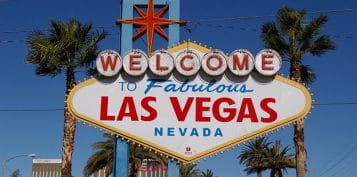How 9 of Diamonds Turned into the Curse of Scotland
Scotland is known for its breath-taking landscapes, kilts, and rich history, which dates back to about 4000 BC. The dark centuries were full of betrayal, bloodshed, and indescribable tragedies. Here, we will solely focus on a single century-old mystery, which is the 9 of diamonds. You will discover the most popular theories surrounding the unlucky card, so let’s dive in.

We will begin with historical references about the 9 of diamonds curse of Scotland. Then, we will look into some alternative explanations that have surfaced throughout the centuries. Next, you will find out the most likely origin of the superstition. Last but not least, we will provide you with answers to the most commonly asked questions on the topic.
Nine od Diamonds Curse of Scotland – References
There’s no shortage of stories surrounding the origins of the infamous card. Most of these stories take place between the 17th and 19th century, which makes it even harder to narrow down the real source. Anyhow, here are the top 4 speculation about the curse of Scotland.
Mary Queen of Scots’ Stolen Diamonds
Let’s start with the very controversial yet beloved Mary Queen of Scots. During her reign (1542 to 1567), a freebooter by the name of George Campbell famously attempted to steal the Crown Jewels. He managed to escape with nine diamonds, and the Scottish people had to pay for them. The tax was commonly known as the Curse of Scotland.
Imagine for a moment if there were top-rated online casinos back then. Maybe the thieving chap would have spent more time playing and have a chance to win a fortune instead of resorting to stealing the diamonds. And maybe, just maybe, the whole thing might have never happened.
The John Dalrymple, Earl of Stair
Let’s take a turn to a dark moment of Scotland’s history, the Glencoe massacre. The orders for the villainous act were given by John Dalrymple, Earl of Stair, in 1692. His coat of arms featured nine diamonds arranged in the pattern of the playing card.
This is why many associate the 9 of diamonds with the much-hated Secretary of State for Scotland, Dalrymple. He ordered the Campbells to assassinate the MacDonalds of Glencoe for missing the deadline to pledge allegiance to King William. Therefore, some assume that the curse of Scotland was born after this despicable act of violence.
The St Andrew’s Cross Misread
Here is a non-violent theory about the origins of the curse of Scotland nine of diamonds. It is suggested the Curse of Scotland was born because of a simple misread rather than a dark, grim story. At the time, the Cross of Scotland was spelt as the Corse of Scotland, so you can see how a mistake like that can be made.

Moreover, the St Andrew’s Saltire has a design similar to the old-style nine of diamonds playing cards. When you turn the card on the side, it looks a lot like the Scottish flag. Some people claim that the card was known as the cross of Scotland, after St Andrew’s Saltire, not a curse.
The Story of the Battle of Culloden
It is said that on the night of the Battle of Culloden, the Duke of Cumberland was playing cards with his men. Then, an officer came in asking for the Duke’s orders for the upcoming battle. Allegedly, Cumberland had already ordered to proceed with no mercy against the Jacobites. The officer was worried about the consequences of the Duke’s decision, so he asked him to put it in writing.
Understandably, the Duke of Cumberland was annoyed with that and grabbed a playing card and wrote on it. The story goes that the random card was nine of diamonds. While that is a great battle story, the chances it is real are slim because there are citations for it much earlier than that. However, it is one of the most popular speculations surrounding the 9 of diamonds curse of Scotland.
Other Popular 9 of Diamonds Curse of Scotland Theories
There are even more popular theories about the curse of Scotland nine of diamonds meaning. In this section, we will look into the earliest mentions of the playing card in relation to the country and a couple of popular card games that could be the origin of the story.
In the Press
The earliest reference in the press for the nine of diamonds was in 1708 in The British Apollo, or, Curious amusements for the ingenious. The author wondered why that specific playing card is referred to as the Curse of Scotland. His theory was that the diamonds symbolise the Regal Crown and that every ninth king of Scotland was a tyrant.
Q. Why is the Nine of Diamonds called the curse of Scotland?
A. Diamonds as the Ornamental Jewels of a Regnal Crown, imply no more in the above-nam’d Proverb than a mark of Royalty, for SCOTLAND’S Kings for many Ages, were observ’d, each Ninth to be a Tyrant, who by Civil Wars, and all the fatal consequences of intestine discord, plunging the Divided Kingdom into strange Disorders, gave occasion, in the course of time, to form the Proverb.Extract from British Apollo of 1708
Later on, in 1726, the same question and answer appeared in a similar book, reconfirming the proverb theory. In the mid-1700s, the card was commonly referred to as the Curse of Scotland, and the most widely accepted explanation was linked to the Jacobite rising of 1715.
It was suppressed by Lord Ormistoune, Lord Justice Clerk (1962 to 1735), who instantly became universally hated in the country. During the 18th century, Scots sometimes called the nine of diamonds the Justice Clerk, and it was considered the unluckiest card in the deck.
Pope Joan Card Game
The Spectator is the oldest weekly magazine worldwide, and it printed a review of a George Gomme book from 1885. The author wrote that he believed that the phrase originated from the Battle of Culloden after the Duke of Cumberland wrote his orders on nine diamonds.
Despite that, Gomme’s book claims that the 9 of diamonds Curse of Scotland must be something that the entire nation hates, and at the time, the Pope was widely unpopular in the country. Enter the game of Pope Joan, which was popular during the 19th century on the British Isles. In the table below, we have noted the most important playing cards in the game:
| Playing Card | Role |
|---|---|
| 9 ♦ | The Pope |
| 8 ♦ | Excluded from Deck |
| 7 ♦ | Beer Card (Stop Card) |
| K and Q ♠️ | Matrimony |
| Q and J ♠️ | Intrigue |
The most powerful card in the game is 9 of diamonds which is called the Pope. All playing cards are used, except for one – the 8 of diamonds – so that there is no direct relation with the Pope card. At the start, each player receives some chips or counters. To win, you must run out of cards before the rest of the players.
But back to Gomme’s book claims – the author noted that the curse of Scotland must be the nine of diamonds. As we mentioned, the theory is entirely based on the idea that Scots hated the Pope since it was the highest-ranking card in the game. That’s why it was commonly known as the curse of Scotland. However, the Spectator’s review pointed out that the phrase was used even before the card game Pope Joan.
The Game of Commette
Another game-related theory about the origin of the phrase is the Commette game. Some say that Mary of Lorraine (others claim James, Duke of York) introduced the game into Scotland. Here, the winning card was nine of diamonds and presumably many Scots lost their fortunes to it, hence the curse of Scotland. So, if you don’t wish to share their fate, we suggest you do play at the top casinos in Glasgow.
The Most Likely Origin
Throughout the centuries, people have argued and will continue to do so about the curse of Scotland. Not so long ago, a professor of Scottish History at Glasgow University, Ted Cowan, said for the Scotsman that the only credible explanation is the one regarded by the most people because it has the most substance.
Vague as that statement is, we are kind of glad that the mystery continues – it makes things all the more magical. Having said all that, we leave it up to you to decide how the nine diamonds turned into the curse of Scotland.
Popular Questions About 9 of Diamonds
In this piece, we have addressed the main theories behind the ominous meaning of 9 of diamonds in Scotland. We did our best to be as detailed as possible, but there is a chance that we might have missed something. Hence, we prepared answers to the most popular questions on the topic.


